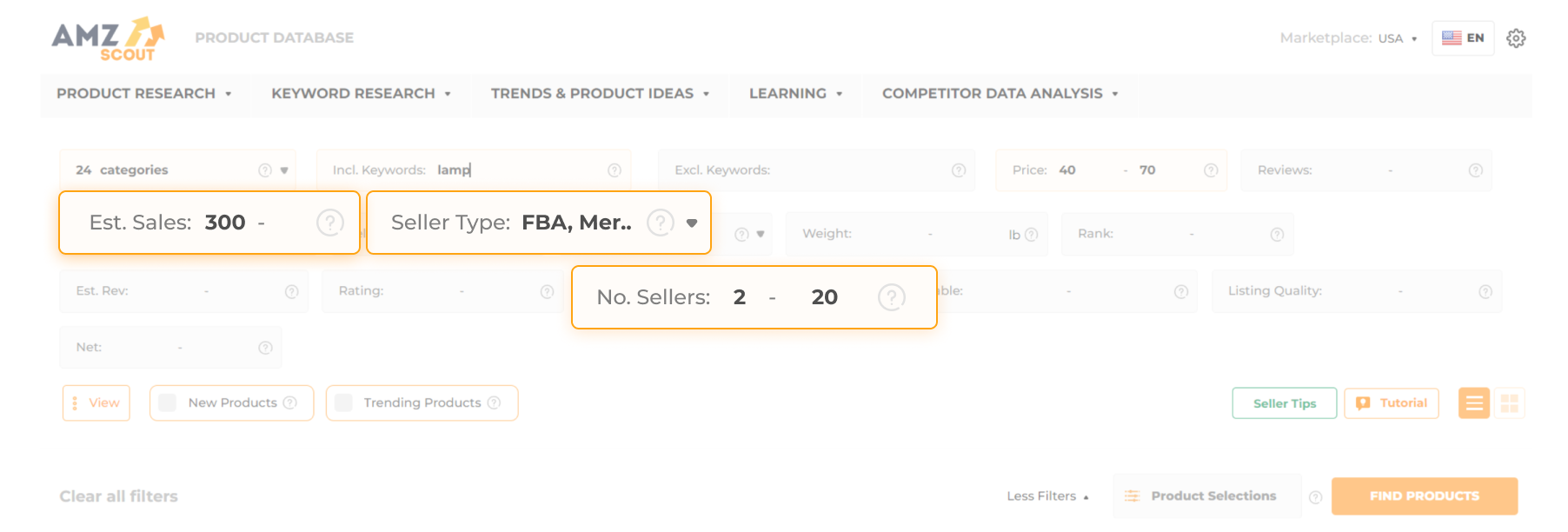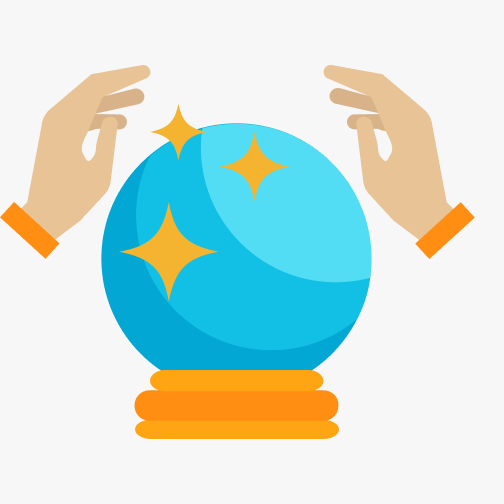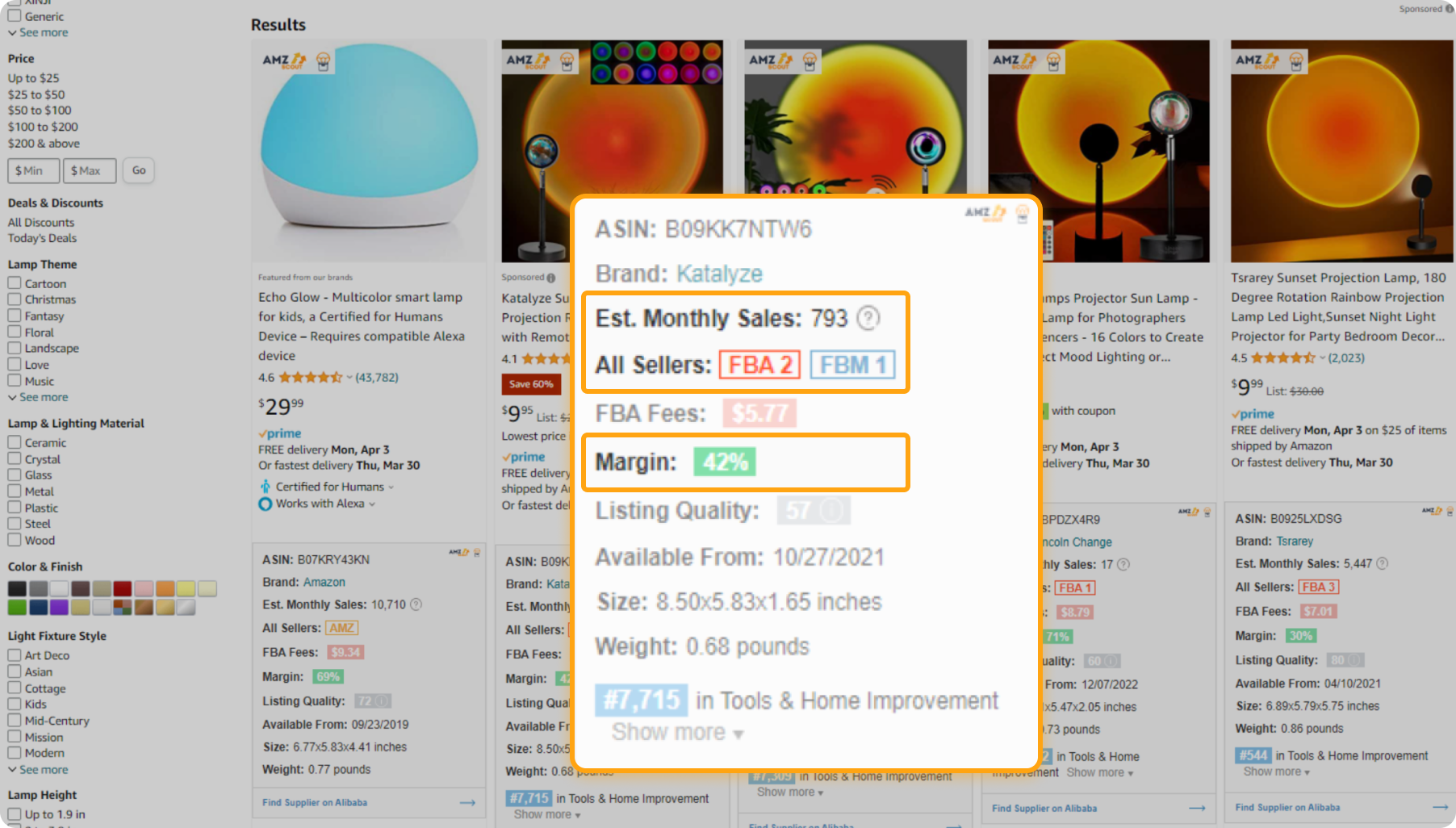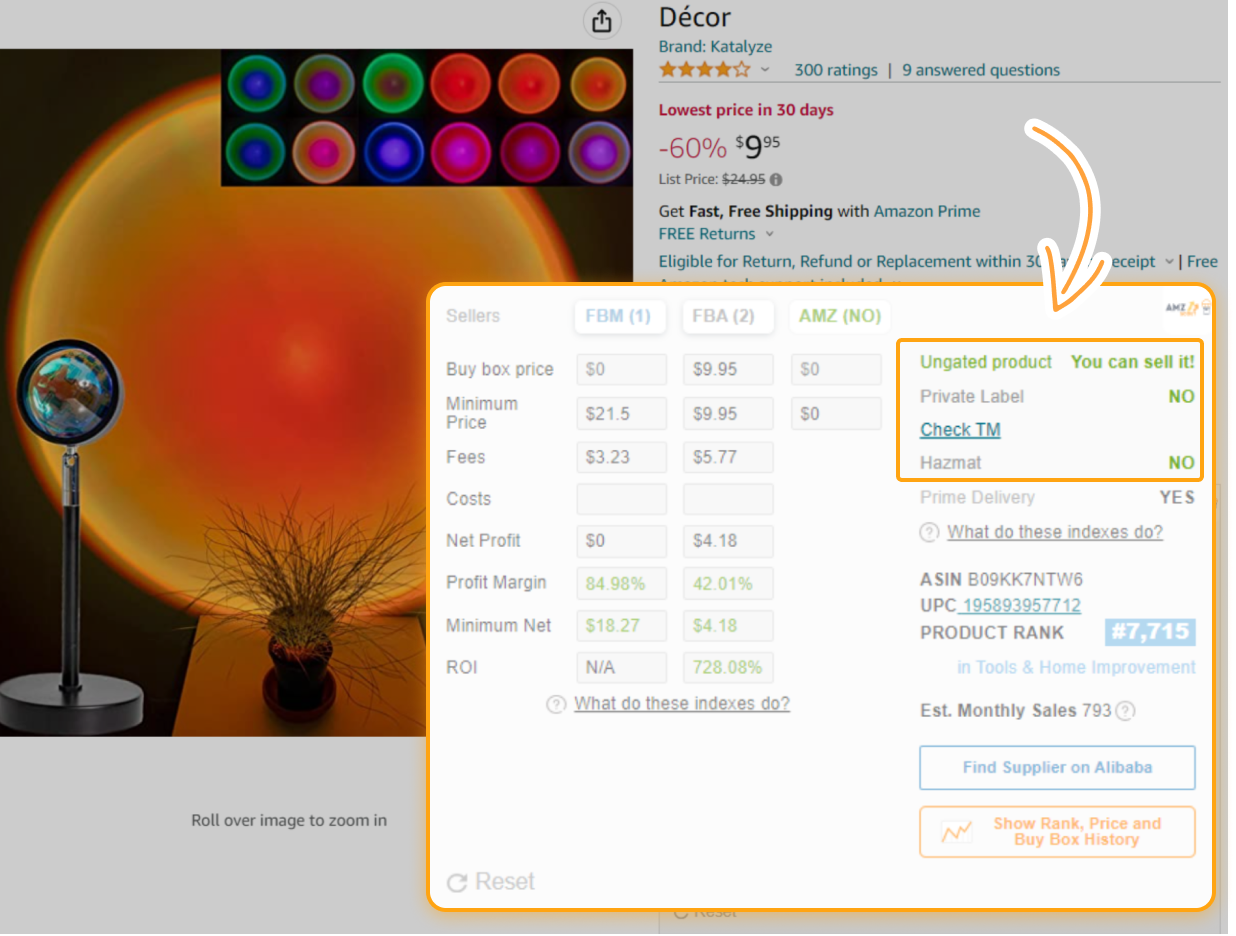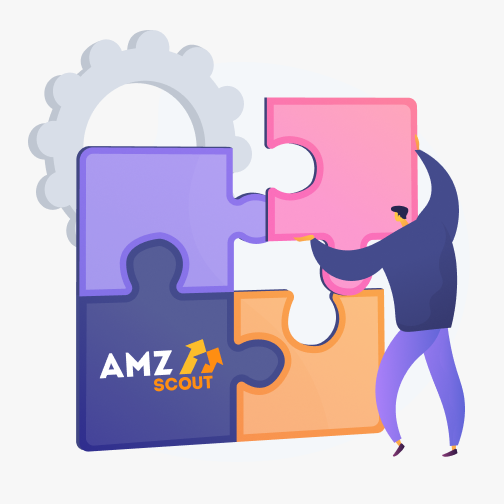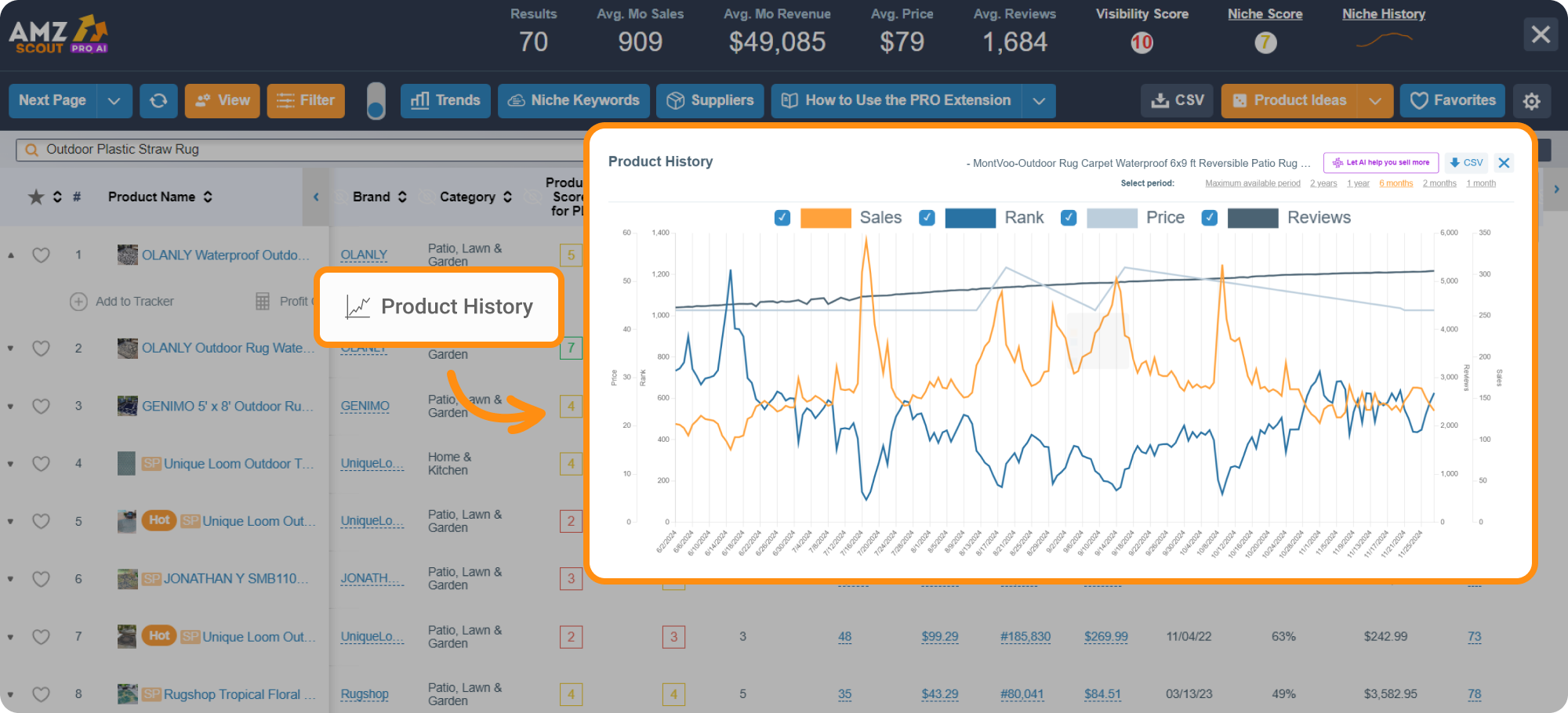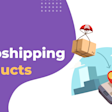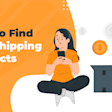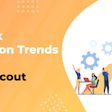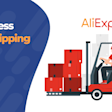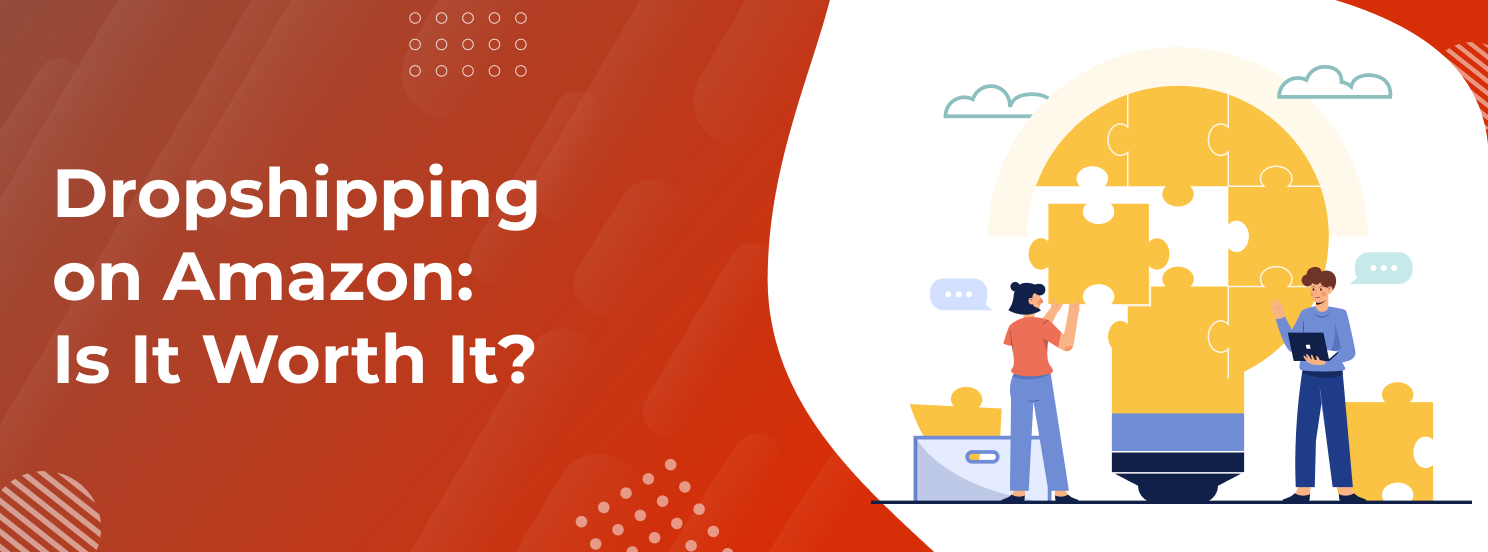
How to Start Dropshipping on Amazon Step-by-Step
Dropshipping on Amazon provides a unique opportunity to access a large market with millions of potential customers. This business model enables you to take advantage of Amazon's infrastructure and resources while focusing on marketing your products.
In this article, we will discuss how to dropship on Amazon, explore effective product search methods, and compare dropshipping with other business models.
What is Amazon Dropshipping?
Dropshipping is a sales strategy where products are sold without the need to store inventory in a warehouse. After an item is purchased by a customer, the order data is transferred to the supplier, and they send the product directly to the customer. This process allows sellers to outsource their product processing and shipping to a third-party company.
Amazon dropshipping specifically refers to selling items on Amazon without the necessity of purchasing or overseeing any physical goods. Dropshipping is a good option for beginners on Amazon, as it doesn’t require a large initial investment. You can implement dropshipping on Amazon as long as you follow the applicable guidelines.
So, while Amazon’s terms and services state that dropshipping isn’t banned, these rules do prevent sellers from practicing traditional dropshipping, since you can’t ship products directly from the supplier to the customer. In order to dropship legally, you need to ask your supplier to create custom packaging and labels, so you become a merchant of record.
How to Start Dropshipping on Amazon
In a few words, dropshipping works like this: A seller selects the products they intend to sell, and lists them on Amazon. When a customer makes a purchase, the seller acquires the product from the supplier and arranges shipping directly to the buyer.
To start dropshipping on Amazon, there are four steps you need to follow:
We’ll cover all of these steps in greater detail later in this article.
Step 1: How to Find Profitable Products to Dropship on Amazon
Finding the right products to sell on Amazon is arguably the most important part of being a successful seller. The products you choose to sell will either make or break your business, so you need to be sure to take your time and make an informed decision.
There are numerous tools and software available to help you identify the best items specifically for drop shipping. AMZScout offers a whole range of tools tailored to solve major dropshipping challenges, from finding profitable product ideas to calculating sales margins.
Get Product Ideas
With so many products available, it can be hard to narrow down your list and find ones that meet all of your criteria. This is where the AMZScout Product Database is particularly useful. It provides you with an opportunity to find product ideas specifically for dropshipping, using various search filters to match your criteria.
2. Use filters to refine your search. You can narrow down the category, seller type, rank, price, estimated sales, reviews, size, weight, and more. For example, you can set the estimated sales number to more than 300, set the price range between $40-60, and the number of sellers between 2-10.
3. Click the “Find Products” button.
4. Review the list of products that match your criteria.
5. Take note of products that interest you. Browse through the list and choose products that seem most appealing to you based on your interests and experience. Evaluate the information next to each product, noting those with a high NET, few sellers, and high ratings.
Quickly Evaluate a Product and Calculate Your Sales Margins
The Amazon Dropshipping, Arbitrage, and Wholesale Extension by AMZScout was designed specifically with dropshippers in mind. This tool allows you to see important information about a product right on the item’s listing page, such as its sales numbers, number of sellers, whether it’s in a gated category, price history, etc.
In addition to assessing these metrics, you can instantly see how much money you’ll make on every sale.
Here’s how it works:
1. Install the Amazon Dropshipping, Arbitrage, and Wholesale Extension on Google Chrome. Start your free trial.
2. Explore Amazon for product ideas. The extension gives you access to essential product data as you browse through Amazon. You can enter product names or keywords related to any niche you’re interested in, and you’ll see product metrics appear right on your search results page in a box under each product.
3. Analyze product data and choose the most interesting product ideas. To help you better understand whether a product is suitable for dropshipping, take note of the following information provided by the extension:
Evaluate profit margins and potential earnings. Prioritize products with over 50% margins.
Assess Amazon fees. Compare the Amazon fees associated with selling the product in order to develop an effective pricing strategy.
Specify the seller type. Choose products sold by FBM or FBA sellers to help you minimize the likelihood of competition with Amazon.
Once you've gathered this information, mark any products that pique your interest for closer examination.
4. Assess the top-most promising products. Visit the pages of any products that meet your criteria. The extension conveniently displays essential information about the product as a built-in window. Pay attention to factors such as whether the item is private-label, if it's gated, or if any other criteria might make it challenging or even impossible to sell. Check to see if Prime delivery is available for a product, as this can make competing for Buy Box more challenging.
5. Examine historical data. This step includes examining a product’s price history and Buy Box history. These historical records reveal price fluctuations that will help you determine the right price to set for your product. You’ll be able to better calculate your potential profits (depending on the product's cost from the supplier and other expenses). Also, consider whether you can afford to lower this price to help you win the Buy Box.
6. Evaluate profit potential using the built-in calculator. Calculate the potential profits each product offers by entering your cost per product into the calculator. These costs can vary based on your business model and may include the following:
Shipping costs, which can be provided by your supplier or shipping provider.
Advertising costs, calculated based on Amazon PPC (Pay-Per-Click) bids.
Other expenses, such as third-party tools or subscription costs for automated services.
The app will compute your sales margins using the provided data. It will factor in the Profit Margin, Minimum Net, and ROI (Return on Investment). Analyze these figures to help you determine whether selling the item will be profitable for your business.
If you’re interested in trying out this handy dropshipping tool, it’s available for a free trial. Use it on a few products you’re thinking about selling to gain an understanding of their metrics and assess profitability.
You can do further research on these products using the AMZScout PRO AI Extension to determine their demand over time.
Researching Demand with the AMZScout PRO AI Extension
Once you’ve compiled a list of products you’re interested in, it’s time to dig deeper to find out how well they have sold over a certain period.
Here’s a guide for using the AMZScout PRO AI Extension:
1. Install the AMZScout PRO AI Extension in your Chrome browser. Start a free trial.
2. Open the product and click the AMZScout PRO AI Extension icon in the corner of your browser. You'll see the data in a comprehensive chart.
3. Explore essential product data.
Analyze the Product History to check how stable sales are and how the price has changed over time.
Assess the Product Score for Reselling which is a measure of the levels of demand and competition of the product in a particular niche. The higher this score is, the better.
With the AMZScout PRO AI Extension, you can be always sure that you have chosen the most profitable products, and your efforts will lead to solid revenue.
Step 2: Find Trustworthy Suppliers
Now, we'll explore strategies and tips to help you locate reliable suppliers who can meet your business needs and contribute to your long-term success on Amazon. It’s also important to comply with the Amazon dropshipping policy. Here are the main criteria dropshippers need to consider when choosing a supplier:
Check reliability and product quality: Look for suppliers with a proven track record of delivering products on time and in good condition. Ensure that the products meet your quality standards by ordering and checking a sample in advance.
Shipping speed: Fast shipping is crucial for customer satisfaction on Amazon. Choose suppliers who can provide quick order fulfillment, because you will be competing with FBA sellers.
Return policy: When you're selecting a supplier for your dropshipping business, it's crucial to factor in how they handle returns. You need to pick a supplier who follows Amazon's rules for handling returns and can manage them on your behalf.
Dropshipping support: Look for suppliers who specialize in dropshipping and offer features like blind shipping (without their branding). Also prioritize suppliers who offer integration with popular eCommerce platforms, as this will streamline your dropshipping business.
Now, we’ll discuss how and where to find secure suppliers for your Amazon dropshipping business.
1. Online marketplaces, dropshipping platforms, and wholesale directories: Platforms like Alibaba will not work, as Amazon guidelines do not permit you to sell third-party products without the seller’s unique identity. Use directories like Worldwide Brands or Thomasnet to discover reputable suppliers.
2. Supplier websites: Visit the websites of manufacturers and wholesalers directly. Many of them have dedicated sections for dropshippers, so check those out as well.
3. Trade shows, exhibitions, and networking: Attend industry-specific trade shows and exhibitions to meet potential suppliers in person. This is especially useful if you're looking for unique or niche products.
4. Google search and social media: Conduct specific searches on Google using keywords related to your niche to discover potential suppliers. Explore social media platforms like Instagram, Facebook, and Pinterest to find products and suppliers that resonate with your niche. Join forums, online communities, or LinkedIn groups related to dropshipping to network with other sellers who can recommend reliable suppliers.
Remember that thorough research is essential when selecting a supplier for your Amazon dropshipping business. Assess them based on the criteria we’ve discussed above to ensure a successful partnership.
Step 3: Organize Packaging and Labeling
Dropshippers don't handle the physical packaging and labeling of products themselves. Instead, they rely on their suppliers or third-party fulfillment centers to handle these aspects. To comply with Amazon packaging and labeling policies, a dropshipper should do the following:
1. Packaging. When a dropshipper receives an order from a customer on Amazon, they forward that order to their supplier, including all the necessary details. The supplier is responsible for packaging the product. They will use their own packaging materials and methods. This is why it's crucial to work with reliable suppliers who can package products securely and professionally to ship products to Amazon customers securely.
2. Labeling. Suppliers usually include labels and barcodes on their products. But you also need to remember that product names, SKUs, barcodes, and your business name need to be printed on the package according to Amazon’s policy. Be sure to find a supplier that will do this for you instead of publishing their own information.
3. Shipping and Tracking. Once the product is packaged and labeled, your supplier will ship it directly to your customer. Choose suppliers that allow tracking, so both of you can monitor the status of each delivery.
Step 4: Create a New Listing, or Add Products to an Existing One
First, check if your product is already being sold on Amazon. If not, you need to create a new listing. Then choose a relevant category, select Add a Product, and create a new product listing. To do this, you need to include a title, the brand, manufacturer, attributes, description, and images. Set your pricing and inventory, review the details, and click Submit. Next, your listing will undergo Amazon's review process before going live.
To add products to an existing listing, log in to your Amazon Seller Central account, search for the product using its UPC, EAN, ISBN, or ASIN, match it with the existing listing, enter your quantity and price, and submit the listing.

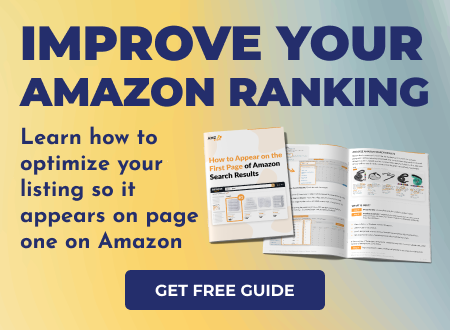
Dropshipping: Pros and Cons
If you haven’t decided whether dropshipping is worth it, we’ve put together a list of pros and cons. There are a number of benefits to dropshipping, but there are also some negative aspects you need to be aware of.
Pros:
Small investments: Because you’re not buying or storing any inventory, it requires a smaller initial investment than other strategies.
Low risk: Dropshipping eliminates the risk of unsold inventory and increases the chances of high sales by focusing on in-demand products.
Easy to start: Anyone can start a dropshipping business. You just need to find the right product and a good supplier.
Less work: You can easily run and manage a dropshipping business from home, since your supplier does most of the work for you. Your biggest task is simply tracking your sales.
Cons:
Lower margins: Because you’re buying products in smaller quantities, you’ll pay more per product. This leads to lower profit margins.
Supply problems: Because you don’t store your own inventory, you’re completely dependent on your supplier to keep your items in stock. This can sometimes lead to selling an item that’s actually out of stock.
High chance of strong competition: If there are too many sellers on the listing, you’re likely to encounter intense competition. It’s going to be difficult for a new Amazon drop shipper to stand out and secure a significant share of sales.
Dropshipping vs. Other Methods
What’s the difference between dropshipping and other sales methods? Below, we’ve compared dropshipping to all of the most widely used sales approaches to help you determine which one is right for you.
Dropshipping vs. Retail Arbitrage
Retail arbitrage involves buying products at physical stores and reselling them on Amazon for a profit.
Dropshipping requires a smaller investment, making it more beginner-friendly.
Retail arbitrage is more labor-intensive and cannot be automated like dropshipping.
Dropshipping is likely to be more profitable and scalable due to automation.
Dropshipping vs. Wholesale
Both involve sourcing products at below-retail prices for resale on Amazon.
Dropshipping is a single-product purchase, while wholesale requires buying in bulk.
Bulk purchasing for wholesale offers better margins, but requires more capital.
Wholesale can be combined with FBA, and this process is as automated as dropshipping.
Dropshipping vs. Private Label
Private-label products are sourced directly from manufacturers with customized branding.
Private label is more expensive, but also offers better margins, similar to wholesale.
With Private label, your product will be unique, and you'll face no competition in the listing if you use Brand Registry.
Although it can be expensive at first, private label can be the most profitable strategy in the long term.
Each business model has its advantages, and your choice should align with your interests and resources. Whether you choose dropshipping, wholesale, or private label, your success will depend on your strategy and opportunities.
Amazon FBA vs. Dropshipping
Although these models are similar in that they handle all aspects of fulfillment for you, they differ in several ways. Typically, sellers who choose dropshipping pay attention only to the difference in investment, and may miss out on a number of advantages of FBA.
Here’s a comparison of FBA and Dropshipping on Amazon:
Inventory management: FBA involves storing your inventory in Amazon's fulfillment centers where Amazon handles storage, packing, and shipping. Dropshipping doesn't require you to store inventory - you fulfill orders directly from suppliers.
Inventory investment: FBA requires a substantial upfront investment in inventory. Dropshipping is more capital-efficient, since you only purchase products when a customer places an order.
Shipping and customer support: FBA provides Amazon's shipping and customer service support, ensuring fast and reliable delivery. With dropshipping, you are responsible for shipping and customer inquiries, which can vary in quality and speed.
Control over inventory: With FBA, you have more control over product quality, storage, and shipping speed. With drop shipping, you rely on suppliers, which can lead to potential quality and delivery issues.
When it comes to eCommerce, deciding between Amazon FBA and dropshipping hinges on factors like budget, your business model, and your availability to control the selling process. FBA oversees Amazon's logistics but needs inventory investment. Dropshipping is flexible and cost-efficient but has its challenges. Your choice should match your business goals and resources.
FAQ
Is Dropshipping legal on Amazon?
In short, dropshipping on Amazon is legal as long as you follow Amazon's policies and guidelines. According to their policy, Amazon does allow dropshipping, but there are three important conditions you need to be aware of:
Sellers can’t purchase a product from another online retailer and ship it directly to the customer.
Sellers must ensure their own business information is visible on the packaging. Products can not have any third-party information on the packaging.
Sellers are responsible for any customer issues that arise and product returns.
You'll need to find suppliers who will comply with Amazon’s rules: arrange unique packaging and labeling for you, and manage shipping to your end customer. As long as you follow Amazon's regulations and work with compliant suppliers, you can implement dropshipping on the platform with confidence.
How much does it cost to dropship on Amazon?
Starting a dropshipping business on Amazon requires some initial funds, but you can still aim to keep costs low. Allocate around $200 for your first product order, and factor in potential delays and payment wait times. You can opt for the free Individual plan, or a Professional account, which costs $39.99/month. You also need to factor in Amazon fees, typically ranging from 6% to 15% of the sale price. Additionally, advertising costs can vary from $0.25 to $3 or more per click, depending on the product category and competition.
How do you do dropshipping from Amazon?
If you're considering dropshipping, you might want to find products on Amazon and sell them on other platforms. It’s important to mention that there are rules on any dropshipping platform in addition to Amazon, and if you send products with Amazon's label or from someone else's brand, this may be considered a violation of the rules.
In order to implement dropshipping from Amazon, you can set up integration with platforms (like Shopify) to help you streamline your dropshipping operations. However, remember that your profit margins may be lower here, since most Amazon products are already sold at retail prices and are quite high.
Is dropshipping easy?
Dropshipping can seem straightforward due to its low upfront costs and lack of need for inventory management. However, in order to succeed, it also requires careful product selection, finding reliable suppliers, and effective marketing. While dropshipping offers flexibility and scalability, success often hinges on thorough research and strategic execution. Utilizing tools and specialized services can help you streamline your dropshipping operations, making it even more manageable and lucrative.
Is Amazon Dropshipping Profitable?
Amazon dropshipping can be a profitable venture; on average, dropshippers can make anywhere from $500 to $5,000 monthly.
It's important to understand that your margins may be relatively low when compared to other business models. Since your earnings typically come from a small percentage of the revenue, the margin from dropshipping is rarely more than 15%.
You can successfully make money through dropshipping on Amazon with profitable niches. However, if you want to scale your business, it’s worth considering strategies like private label or wholesale.
Conclusion
Dropshipping on Amazon can be a profitable strategy if it’s done right. However, Amazon’s rules might prevent you from running a traditional dropshipping business, so keep that in mind before you get started. If you plan to drop ship on Amazon, make sure to use dropshipping product research tools to ensure that you find the right products to sell.
